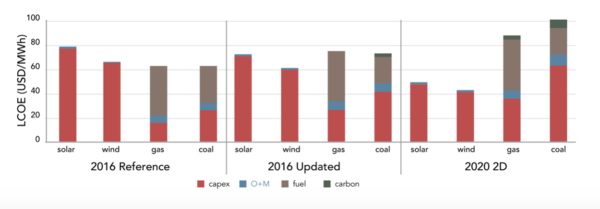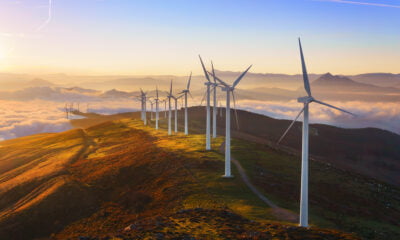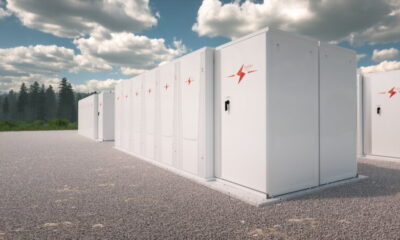

Energy
Renewable Power Is Most Cost-effective Option Today
The Carbon Tracker Initiative has found that renewable power generation costs are lower on average around the world than clean energy plants and fossil fuels. This is set to be more cost-competitive by 2020.
“Policy-makers and investors really need to question out dated assumptions on technology costs that do not factor in the direction of travel post-Paris. Planning for business-as-usual load factors and lifetimes for new coal and gas plants is a recipe for stranded assets,” said Carbon Tracker’s head of research James Leaton.
End of the load for coal and gas?, compares the power-generation costs of four new-build coal, gas, wind and solar plants. The paper applies a Levelized Cost of Electricity (LCOE) 1 sensitivity analysis across three scenarios: the 2016 reference case scenario, an updated 2016 scenario and a 2020 2 ̊C pathway setting, where investment decisions take into account decarbonisation trends.
The LCOE study shows that reduced load factors and shorter lifetimes for coal and gas plants in a world that is decarbonising steadily, significantly undermine plant economics. Few models to date have factored in this kind of dynamic when calculating future LCOE. Meanwhile, the combination of lower cost capital with cheaper technology for solar and wind improves the relative competitive position of renewables.
This analysis explains why renewables are already the cheapest option in a number of markets.
“This trend is only likely to spread as the growth of renewables undermines the economics of fossil fuels,” said Paul Dowling co-author of the report. The analysis compares the technical specifications of coal and gas plants with what is being achieved on average in plants currently operating and then with projects that may occur in 2020 and beyond. For example, typical plant utilisation rates used by industry in reference case scenarios are around 80% for coal and 60% for gas. But we know from available 2013 data that global average plant capacity factors were much lower at 59% and 38% respectively thereby making the plants less competitive than had been thought.
By 2020 falling utilisation rates under a 2 ̊C scenario finds plant capacity factors for coal and gas drop to an average of 42% for coal and 31% for gas, thereby leading to an increase in costs of $16/MWh for gas plants and $38/MWh for coal. By contrast, if solar and wind could deliver capacity factors of 20% and 40% respectively, they would cut their LCOEs by $6/MWh for solar and $15/MWh for wind.
Who is developing renewable power plants is an important factor to consider – developers and management funds with lower costs of capital are entering the market, bringing down
1 The levelled cost of electricity is a way to compare different methods of electricity generation using average total cost to build and operate a power plant divided by its total lifetime energy output LCOEs for more capital-intensive renewables. Factoring in the higher deployment of renewables and learning curves for technologies indicated by Bloomberg New Energy Finance further reduces the capital costs of clean power plants.
The study finds that the direction of travel forged by the implementation of Nationally Determined Contributions post-2020 will see renewables on average more cost- competitive even if fossil fuel prices fall and carbon prices are modest at around $10/tCO2 or lower.
The chart below shows the transition of relative average global costs from 2016 reference numbers through updated 2016 operational indicators to a post-2020 low carbon world.

“Markets are having to deal with integrating variable renewables on a growing scale. Rather than continue debating whether this energy transition is already occurring, it is time to focus on developing the opportunities in energy storage and demand management that can smooth the process,” said senior analyst and co-author Matt Gray.
The full report can be found here: http://www.carbontracker.org/report/the-end-of-the-load-for-coal-and-gas/
































